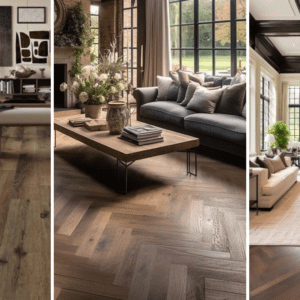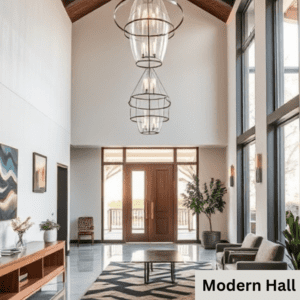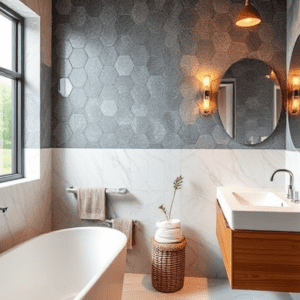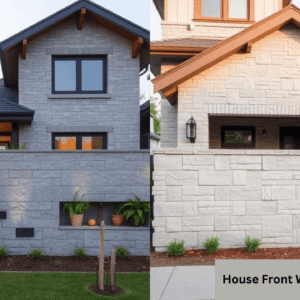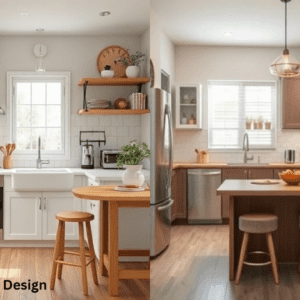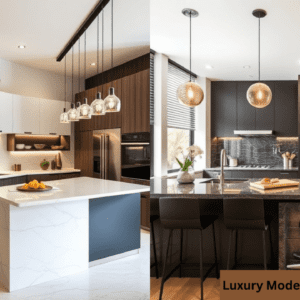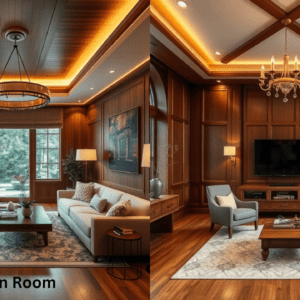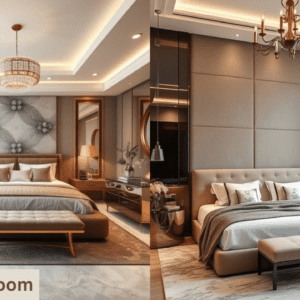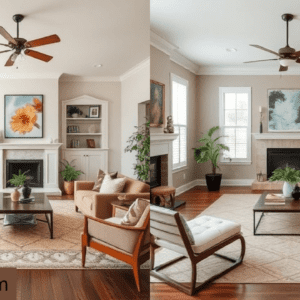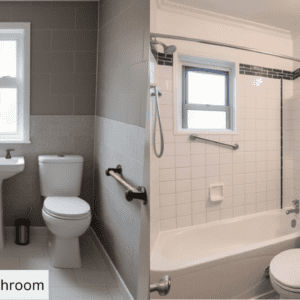
Wall moulding Historically, the custom of moulding walls around the home has been viewed as a feature of beauty, elevating blank walls into art. So whether you’re looking at restoring a vintage house or bringing a layered look to a contemporary house, it’s easy to see how using moulding can be effective. It serves dual purposes, as an enhancement and aesthetic of the space and guard the walls from damage. The following article expands on the parameters of decorative wall moulding design: popular styles and materials used, techniques as well as how to use moulding without it looking out of place within the interior decor.
What is Wall Moulding?
In general, any kind of ornamental board or panel that is applied to wall surfaces with the aim of improving the wall’s overall look is referred to as wall moulding. They exist in many styles, proportions, and materials, and may serve both functional and decorative purposes. Mouldings may create a frame around a full room, create designs about a particular object, and also provide clean surfaces to vertical corners of the wall along the boundary of the ceiling and the floor.
Popular types of wall moulding include:
- Baseboards: located at the lower part of the walls to act as a protection to the walls and also enhance the finish of the wall to the floor.
- Crown Moulding: type of moulding used in the junction of the walls and the ceiling
- Chair Rails: horizontal moulding positioned at the midpoint of a wall for decoration and to prevent wall damage caused by chairs and other objects
- Picture Rails: type of rail used to hold pictures and other decorative items without tampering with the surface of the walls.
- Panel Moulding: The purpose of this is to create ornamental patterns on the surfaces of the walls or to outline sections of the walls.
- Wainscoting: A wainscot is a trained wall covering that provides a graphical effect along with mean masonry to the lower parts of the walls.
The Appeal of Wall Moulding Design
Wall moulding elevates interiors, offering numerous benefits:
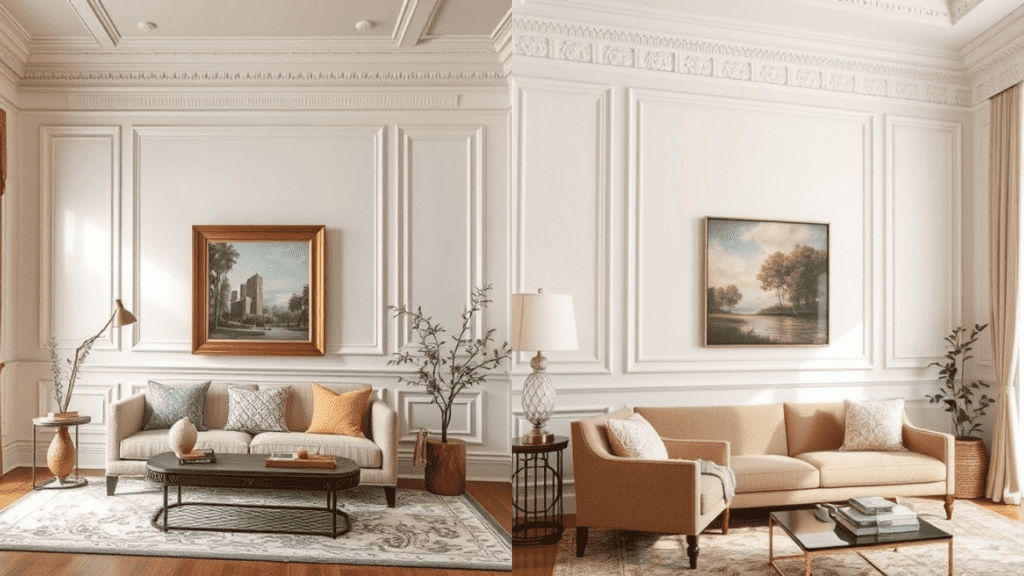
- Adds Dimension: In the absence of plenty of molding, the dullness of the wide plain wall creates its own reality depth and adds an illusional texture.
- Enhances Aesthetics: It can make a dull room feel and look like a well-furnished or even room filled with more vibes.
- Defines Spaces: Moulding can assist in outlining spaces, especially those with an open floor plan.
- Historical Charm: Bygone ages’ classic airs are fashioned all over again by styles that include classic moulding.
- Customizable: Sheaths can be fashioned to suit either extreme or minimal looks.
Popular Wall Moulding Designs
1. Traditional Panel Moulding
Panel trimming is an essential feature in the panels of classic interiors. This design comes by making either rectangular or square shapes using rimming strips at narrow widths. These panels may or may not be coated with paint in contrasting colors and patterns.
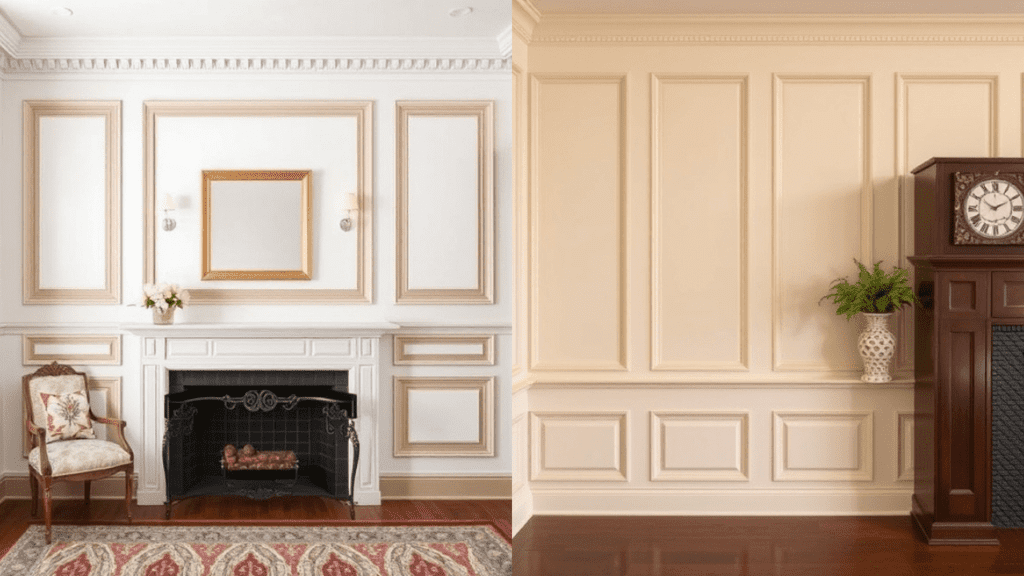
- Where to Use: Formal or casual dining areas, living or even entertainment rooms, or corridors.
- Pro Tip: Tending to a wall color that is neutral across the basin will bring out the beauty of the entire arrangement.
2. Geometric Patterns
In cutting-edge spaces, geometric wall trim speaks for itself. Think chevrons, diamonds, or abstract shapes. This style goes great in modern slotted homes which can be amped up by painting in awesome colors.
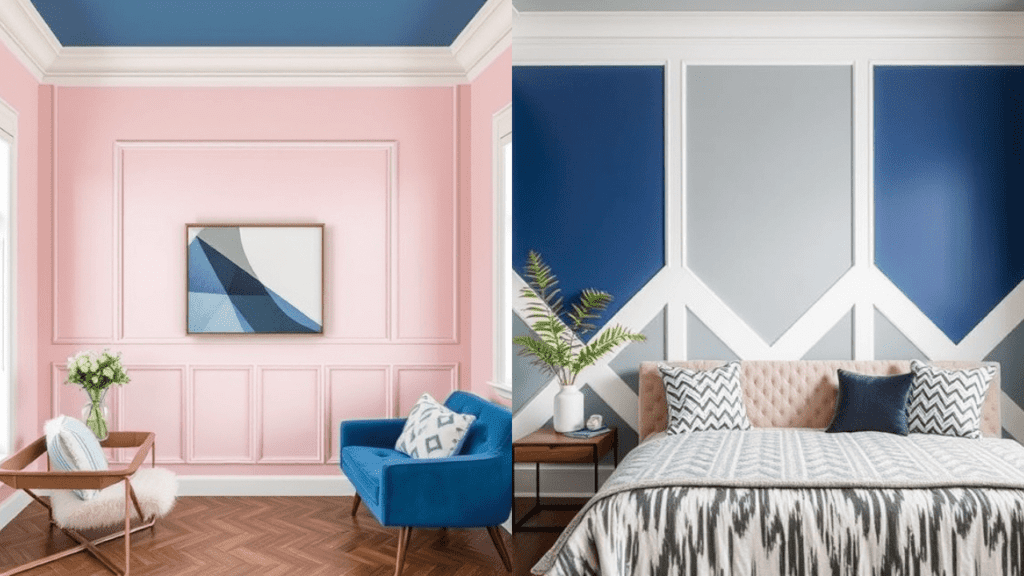
- Where to Use: Where previously painted color blocks in rooms have been raised, particularly in master or lounge rooms.
- Pro Tip: For 9.
3. Wainscoting
Wainscoting is able to offer the distinct appeal of being both cozy and elegant at the same time as it occupies the lower section of the wall. There are numerous types of wainscoting available that include modern flat panels, or traditional raised panels.
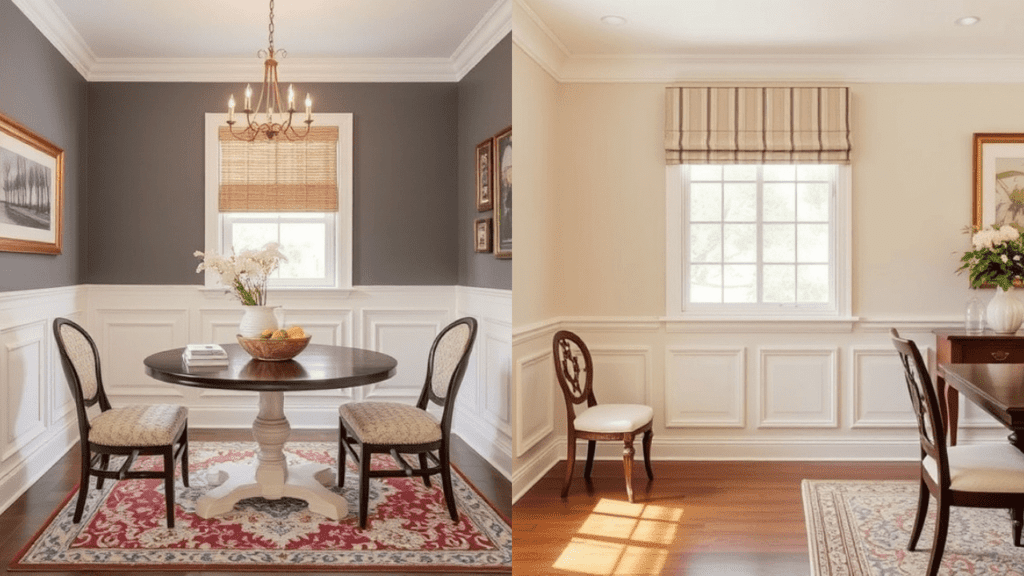
- Where to Use: Applications such as Entryways, stairways, and dining rooms would benefit from the wainscoting.
- Pro Tip: To add elegance to your room, you can combine the wainscoting with intricately designed wallpaper and paint it above.
4. Coffered Walls
In geometry, the term coffer describes a grid made of molded boxes or shapes, which can be square or rectangular. Coffee walls, though less popular than coffee ceilings, add a sense of charm to any interior design.
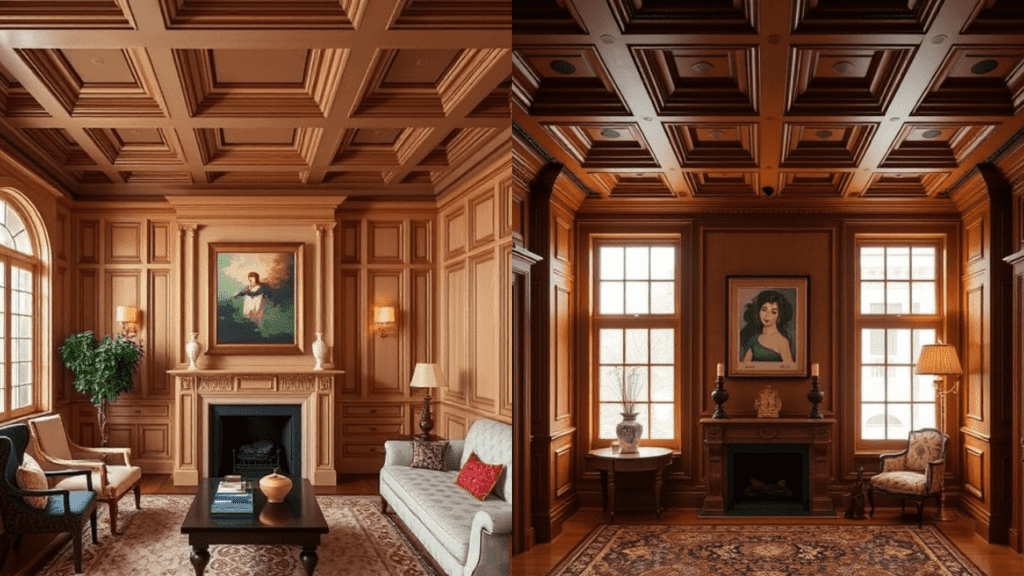
- Where to Use: They can be placed in offices, libraries as well as formal sitting rooms.
- Pro Tip: an elegant appearance can be achieved by incorporating dark and rich wood tones into the design.
5. Minimalist Linear Moulding
If the aim of the project is to create something modern, eliminating any unnecessary detail is key, this is why choosing linear moulding is the best option. Horizontal or vertical narrow strips help make the texture more subtly visible throughout the area, without taking attention away from the space.
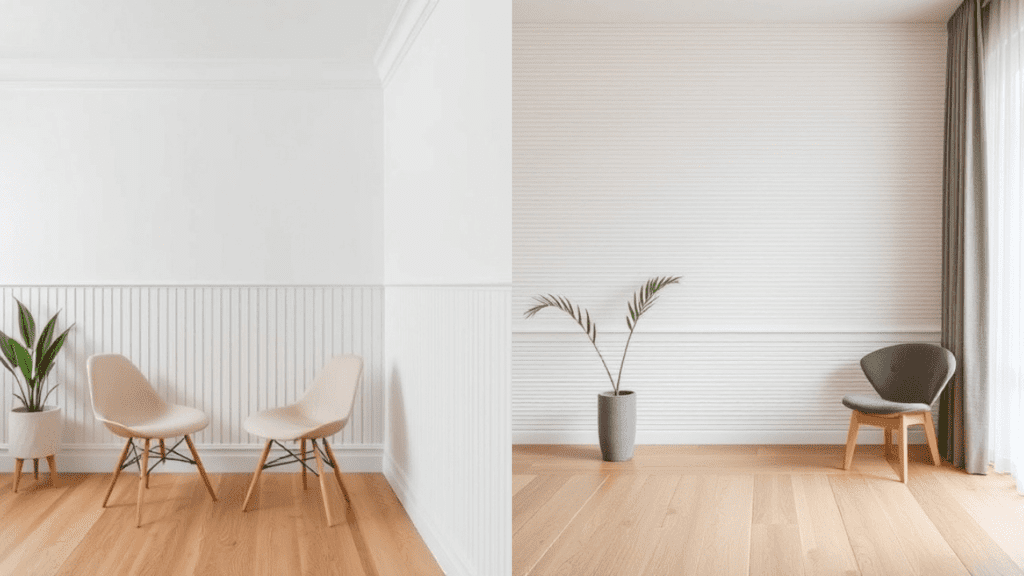
- Where to Use: They would fit perfectly in bedrooms, study rooms, and or minimalist living rooms.
- Pro Tip: A great tip would be to varnish the frames with the same color as the wall, helping to eliminate distracting seams.
6. Crown and Base Moulding
A good recommended approach to help outline spaces is to use Crown and base mouldings alongside each other, crown molding works well to accentuate the room by enriching the junction between the ceiling and the walls while baseboards help keep everything in place and give the area a tidy and polished finish.
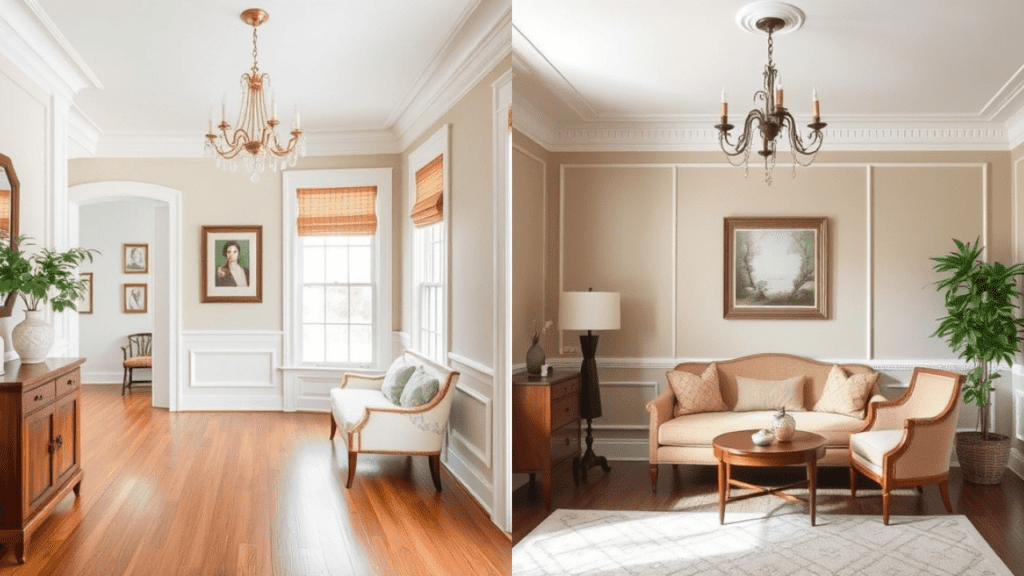
- Where to Use: They can be used in any room across the house.
- Pro Tip: Incorporate the use of broad Korina molding in household rooms with larger ceiling heights for effective results.
Materials for Wall Moulding
The choice of material for wall mouldings greatly determines the appearance, endurance, and price of the mouldings. Below are some examples:
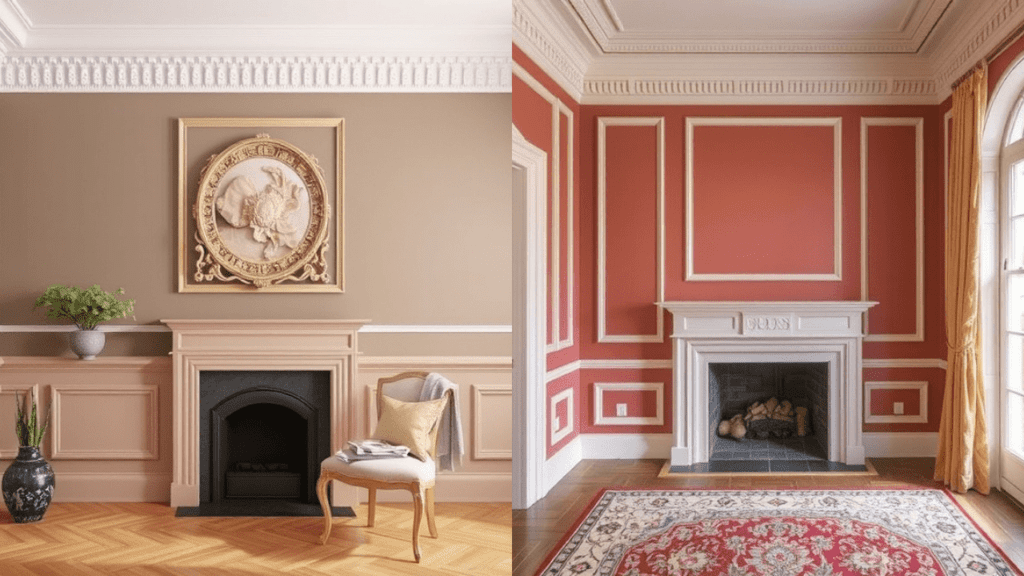
- Wood: wood is a common material that is appreciated owingto its flexibility. They include pine, oak, and cherry.
- Pros: Customizable, classic, and robust.
- Cons: High cost and would stretch in humid conditions.
- MDF (Medium-Density Fiberboard): The wood alternative is economically friendly.
- Pros: Doesn’t cost much and Is simple to apply paint, also would not stretch.
- Cons: Will not stand as long as a wooden one and will blow up when it comes into contact with water.
- PVC: Very low cost since it’s light and does not rust so it can only be used in places like bathrooms or kitchens.
- Pros: Durable, resistant to moisture, and cheaply designed.
- Cons: Texture characteristics are limited compared to wood.
- Plaster: To make intricate designs, society has turned the other cheek to plaster which is used for detailed work.
- Pros: The outcome is detailed and intricate.
- Cons: Frangible and would have to be installed professionally.
- Metal: For various modern designs, the apparent material would be metal as it is very appealing as well as streamlined.
- Pros: Very new and would withstand the test of time.
- Cons: High starting cost and has a singular use.
Tips for Incorporating Wall Moulding
- Match the Style: Ensure that the molding that you purchase matches the overall design of the house. For instance, large and elaborate designs tend to work well in traditional places however simplistic designs go well in modern homes.
- Proportional Sizing: If possible, there must always be a balance in size between the room and the molding integrated. For instance, large molding can easily overpower small areas while thin molding would be underwhelming in larger spaces.
- Play with Colours: White is admittedly popular, but do not hesitate to break the rules and paint moulding in eye-catching colors for more properties.
- Experiment with Finishes: Different finishes including gloss, matte, and metallic can all give moulding an entirely different appearance.
- DIY vs. Professional Installation: Simple moldings can be accomplished without much difficulty, but more complex patterns may require the help of professionals to install them.
How Wall Moulding Complements Interior Design Styles
- Modern: A clean appearance is achieved with linear or geometric moulding painted the same color as the walls.
- Traditional: Ornate crown moulding and paneling add timeless elegance.
- Scandinavian: Simple wainscoting in beige with clean lines enhances the open and breezy look.
- Industrial: Dark and bold patterns or metal moulding accentuate the raw and rugged look associated with the industrial interior.
- Bohemian: Building mantels mitered at odd angles would set an asymmetrical molding pattern which is also pleasing to the eye.
Conclusion
Wall moulding design is one of the most unique and diverse aspects of interior design. No matter what theme you are going after, whether classic, elegant, or contrast, molding can completely change your area. The size of the mold, what you are going to attach it to, the material, and its color can all make a difference. With creativity and careful planning, wall moulding can elevate your home, turning ordinary walls into stunning architectural features.

